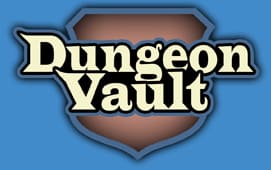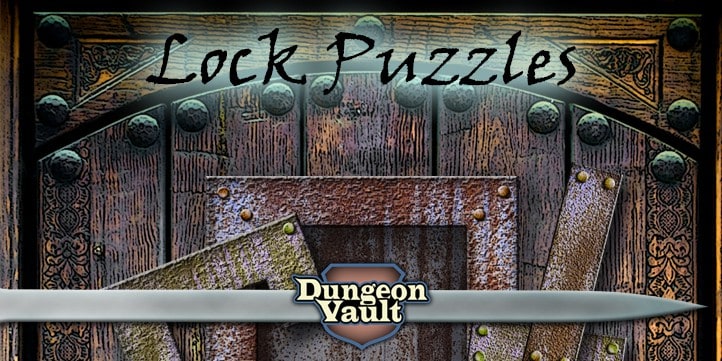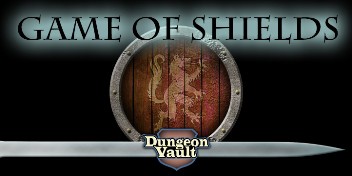
D&D puzzles can be great fun and they are a nice challenge for PCs of any level. But your puzzles need to match the PCs’ strength. And that’s where things can get a little tricky. It is especially annoying when high level characters use their near limitless powers to circumvent a puzzle you spent hours creating. So what is a DM to do?
Fear not, in this article we’ll go in to all the ways you can design puzzles that are just right low to high level characters.
If you were looking for puzzles for every player skill level instead, read this article.
Puzzles for low level characters
When PCs are just starting out, they don’t have many means to circumvent your puzzles. So if you are wanting to use a puzzle that might be easily evaded by magic, now is the time to do it.
For instance, I created a Lock Puzzle that can lock any door or other object. It looks like just a mechanical lock and at low levels players have no means of bypassing it. But at mid- to high levels PCs can simply blast the door open or fly through a wall. So if you are using mechanical puzzles, you really want to introduce those early on in the game. Also, it is better to use bridge puzzles early on before all PCs can simply fly over them.
You’re also safe with secret messages written in code for now. The 1st level spell comprehend languages doesn’t translate codes or secret messages. If your players wish to use magic, it is ALWAYS a good idea to check if the spell says what they say it does. Often there are limits to a spells use designed especially to keep players from breaking your puzzles and secret plots.
Even if spells don’t specifically mention their limits you can rule that there are such limits. For instance, the first level spell ‘mold earth’ can excavate 5 ft of earth, which a clever player might use to tunnel under a door with a puzzle lock on it. But that’s pretty game breaking and it is fair for a DM to state that it can’t be used in a dungeon.
In any case, every puzzle you use at any level should have many steps to solving it. Players can often bypass one step will find it harder to bypass every step. And if they do, you can give them a partial win without giving away the whole puzzle.
Puzzles for mid level characters
There are two ways mid level characters can circumvent puzzles. The first is to bypass psychical boundaries and the second is through divination.
Examples of bypassing physical boundaries are casting fly to avoid a bridge puzzle, blowing up the wooden door with a mechanical puzzle, of simply teleporting to the other side. Examples of using divination is to cast the divination spell to ask a God for the clues that are key to solving a puzzle.
There’s a couple of ways to deal with this. And there is no one right way to go about it.
- First, you can have all your puzzles by magic with an impossibly high DC so PCs have no means of bypassing the puzzle. If you overuse this players will feel railroaded.
- Second, you can make the players’ powers part of the puzzle design. So let’s say a player can teleport to the other side of a puzzle locked door. That room might be filled to the brim with acid. But it can also hold a key pieces needed to open the door. The PC can grab the piece and teleport back to the party. Or a player can use scrying to get a key piece of information to solving the puzzle, but they never get the whole thing. Now, the ability becomes a part of your puzzle design. Incorporating player powers into your design makes them relevant for the players and indispensable to solving the puzzle.
- Third, you can time your puzzles. Mid level players have many powers, but they are not limitless. So yes, players can use up their magical abilities just before they battle the villain. But they will probably want to conserve their powers for the final fight. So it’s a perfect time for introducing a puzzle. Or they can defeat the villain and – having used all their abilities – find that his treasure hoard is locked by a puzzle.
Wilderness puzzles is an example of a great mid level puzzle.Only after the players have solved this terrain puzzle, does the enemy appear to fight in the very terrain the players have created. So with this setup, there is simply no way the players can bypass it.
Puzzles for high level characters
At the highest level players are unlikely to run out of spells or abilities. They also have access to spells that should have the power to bypass a puzzle such as wish. And again, there are a couple of ways to deal with this.
- First, if a player is willing to spend a huge spell such as wish on a puzzle, let them have their win. It’s a big investment and they have the freedom to choose there they spend their resources. You can always save that puzzle for another time.
- Second, the enemies that design these puzzles are more powerful as well. A God’s puzzle might not be prone to ordinary magic.
- Third, you can introduce puzzles that have an effect which can’t be easily recreated by magic. For instance, potion puzzles requires ingredients that only can be obtained by the highest level of PCs. Just obtaining the ingredients required IS a part of the puzzle.
Another example is the Game of Shields. This is a political puzzle requiring to influence and manipulate factions. But at high levels those factions are just as powerful as the PCs. And finally, you can use moral puzzles. In this case the party is faced with a moral dilemma. For more information on this setup read this article about moral puzzles.
The puzzles I design are meant for PCs of all levels. And because they generally involve more steps to solving them it’s easy to adjust them for different level PCs. Also, there are hundreds of puzzles to choose from so if your players do bypass a puzzle you won’t have wasted all that hard work. Finally, each of these puzzles has artwork for physical and virtual tabletops. In my experience, if you show players something special they can play around with, they won’t want to bypass it anyway. So check out the VAULT bundle.
By Paul Camp






